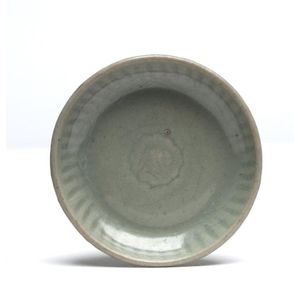William IV Teapot and George IV Cream Jug
You must be a subscriber, and be logged in to view price and dealer details.
Subscribe Now to view actual auction price for this item
When you subscribe, you have the option of setting the currency in which to display prices to $Au, $US, $NZ or Stg.
- William Iv - William IV was King of the United Kingdom and King of Hanover from 26 June 1830 until his death in 1837, and in English furniture design it represented the brief period between the end of the Regency period, and the beginning of the Victorian period.
- Embossed / Repousse - Embossing, also known as repousse, is the technique of decorating metal with raised designs, by pressing or beating out the design from the reverse side of the object.It is the opposite of chasing, where the decoration is applied from the front. An embossed or repoussed object may have chasing applied to finish off the design.
- George Iv - George IV (1762 ? 1830) was king of the United Kingdom of Great Britain and Ireland and king of Hanover from 1820, until his own death in 1830. From 1811 until his accession in 1820, he served as Prince Regent during his father's final mental illness.
In English furniture design, his reign from 1811 to 1830 is known as the Regency period. - Circa - A Latin term meaning 'about', often used in the antique trade to give an approximate date for the piece, usually considered to be five years on either side of the circa year. Thus, circa 1900 means the piece was made about 1900, probably between 1895 and 1905. The expression is sometimes abbreviated to c.1900.
- Finial - An architectural decoration, found on the upper parts of of an object. On furniture they are usually found on pediments, canopies and shelf supports. On smaller ceramic or silver items, such as spoons, they may decorate the top of the item itself, or the lid or cover where they provide a useful handle for removal.
Finials have a variety of shapes and forms. They may be urn-shaped, baluster shaped round or spiral, but usually taper into an upper point. Many real life shapes may also be used as finials, such as pineapples, berries, pinecones, buds, lotus and acorns. Sometimes animals such as a lion are depicted, or fish and dolphins.
This item has been included into following indexes:
Visually similar items

Three Chinese Longquan celadon vessels, late Song to Yuan dynasty, 13th-14th century, comprising a jarlet, 5.5 cm, a small dish, 10 cm diameter, and a brush washer, 13 cm diameter

A Victorian silver coffee pot by Edward and John Barnard, London 1852, with shaped two tier finial on fluted cover, the handle with scroll thumb piece, the spout with 'C' scroll mouldings, the ribbed body of baluster form, engraved with floral spray and ca

A George lV silver four piece tea service with burner, Edward, Edward Junior, John and William Barnard, London, 1829, (5), comprising teapot, coffee pot, burner, milk jug and sugar basin, the pots with cast floral finials, the covers having fluted skirting

A mid-19th century Irish silver coffee pot, profusely embossed, with cast flower and leaf finial; James Moore, Dublin 1848. Height 27 cm. Weight approx 1180g
